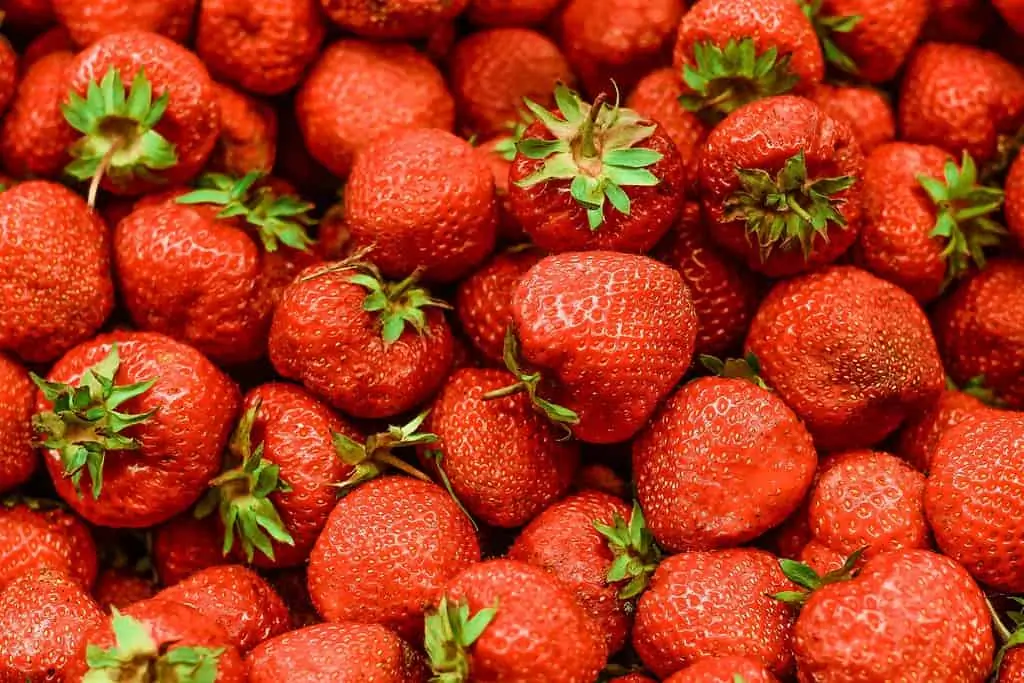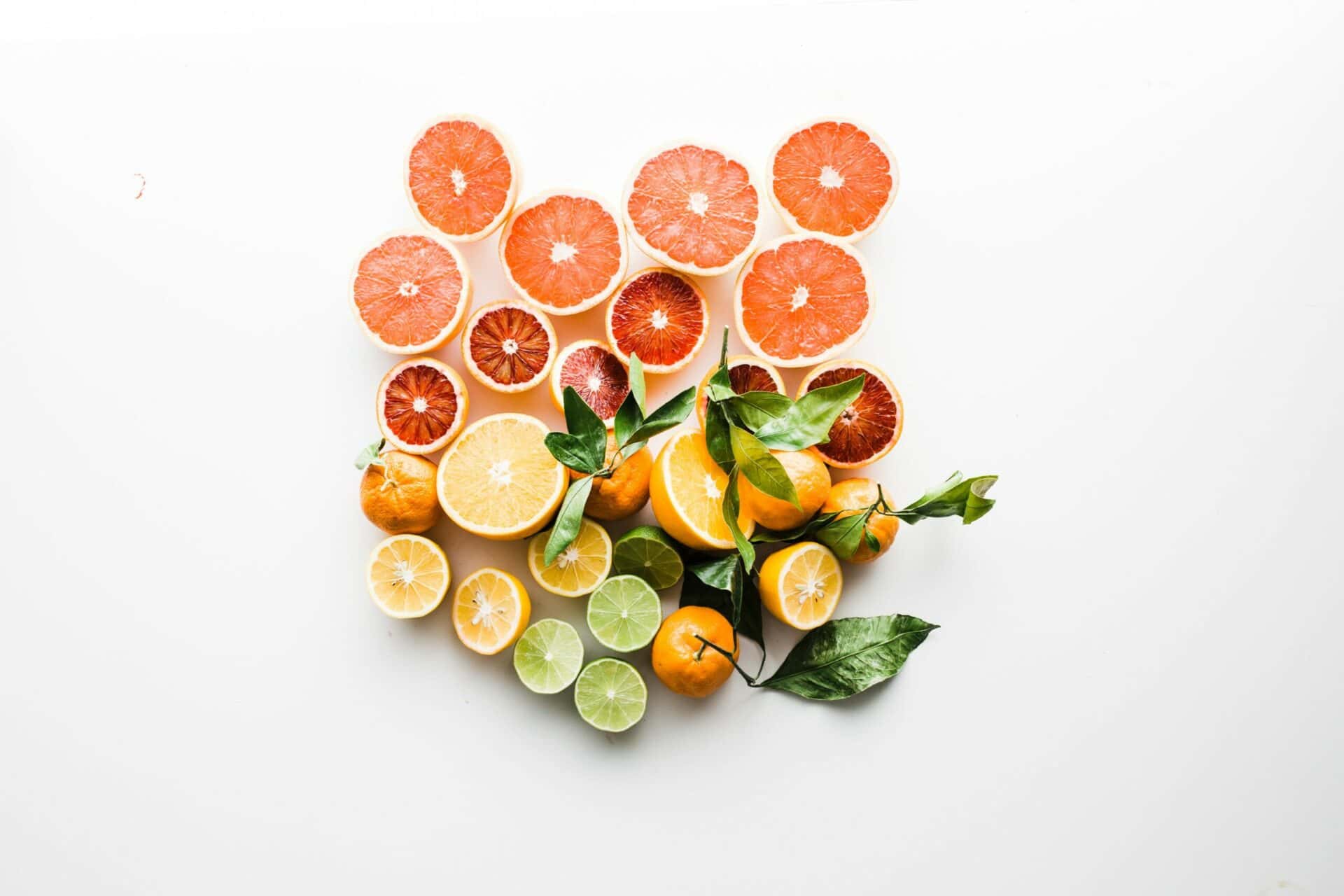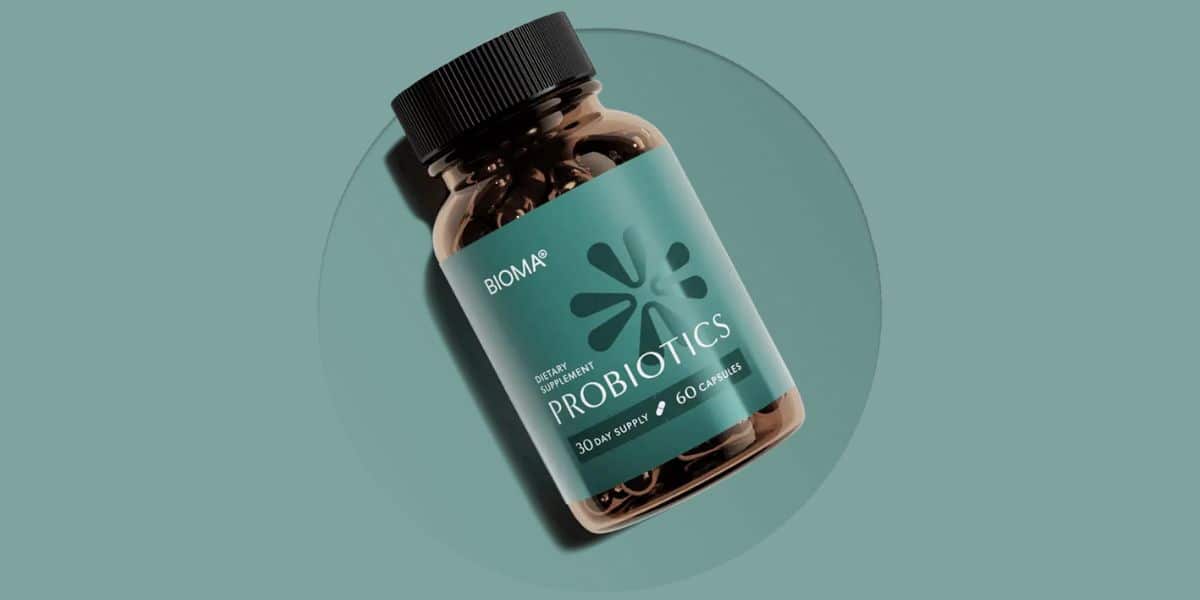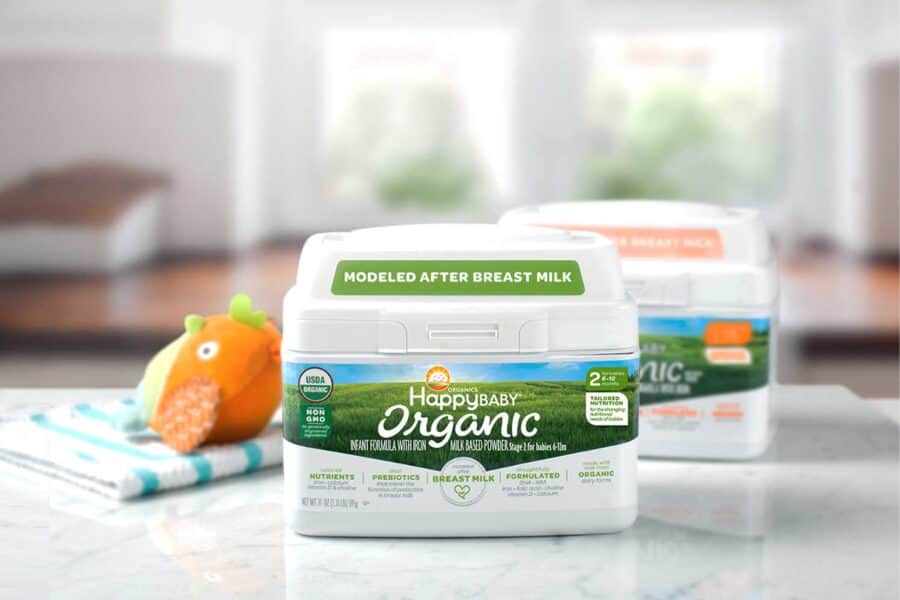Eating seasonally is more than just a culinary trend; it’s a sustainable lifestyle choice. If you’ve caught yourself wondering what fruit is in season, we’re here to help. By choosing fruits that are in season, you’re not only getting the freshest, tastiest produce but also contributing to a healthier planet. This guide is your roadmap to understanding and embracing the rhythm of nature’s bounty.

Why Eat in Season? Discover the Benefits
Eating in season is beyond just enjoying fruit; it’s about embracing a lifestyle that aligns with nature’s cycles. Exploring what fruit is in season reveals the best flavors and gives you abundant choices to explore each season. Here are some reasons to choose seasonal produce:
Peak Nutritional Value: Fruits in season have reached their peak in terms of vitamins, minerals, and antioxidants. They are harvested at the right time and don’t lose vital nutrients during long storage periods or transportation. This means every bite you take is not only delicious but also packed with the goodness your body needs.
Optimal Flavor: There’s a noticeable difference in taste when it comes to seasonal fruits. They are typically fresher, juicier, and more flavorful. This is because they are allowed to naturally ripen on the vine or tree and harvested when they’re ready to eat. Out-of-season produce, on the other hand, is often picked before it’s ripe and then artificially ripened, leading to less flavor and a different texture.
Environmental Stewardship: Choosing seasonal produce supports a more sustainable food system. It reduces the need for long-distance transportation, which significantly lowers greenhouse gas emissions and energy consumption. It also means less reliance on preservatives and packaging materials, contributing to reduced waste and pollution.
Economic Benefits: Buying in-season fruits can be more economical. When produce is abundant, prices go down, making it more affordable for you and everyone else. Additionally, by purchasing from local farmers and markets, you’re supporting the local economy and helping to sustain the livelihoods of local growers.
Variety and Creativity: Eating seasonally introduces you to a wider variety of fruits throughout the year, encouraging a diverse diet. This variety isn’t just good for your health; it also allows you to experiment with different recipes and flavors, keeping your meals exciting and varied.
How to Identify What Fruit is in Season
Knowing what’s in season can seem daunting, but with a few tips, you can become a seasonal eating pro:
Visit Local Farmers Markets: This is perhaps the easiest way to identify what’s in season. Local produce will be abundant, fresh, and typically labeled with its origin. Engage with the farmers and ask questions. They can tell you not only what’s in season but also provide tips on how to select and prepare the fruits.
Community Supported Agriculture (CSA): Joining a CSA can be a great way to receive a regular supply of seasonal fruits directly from a local farm. It’s also an opportunity to learn more about how and where your food is grown.
Seasonal Produce Guides: Many websites and apps provide comprehensive guides on what’s in season in your area. These can be great resources to quickly check before heading to the grocery store or planning your meals.
Observe Nature: Pay attention to the natural world around you. The blooming of certain flowers, the presence of specific birds, and even the temperature can give you clues about what fruits are likely in season.
Trust Your Senses: Often, the best way to determine if a fruit is in season is to use your senses. Look for fruits that are vibrant in color, firm to the touch, and have a fresh, strong aroma. These are all signs that a fruit is at its peak.

What Fruit is in Season: Spring
Spring is a time of renewal and rejuvenation, and this is reflected in the fresh produce that becomes available. As the cold, harsh winter gives way to a world of color and vitality, a variety of fruits start to bloom.
Strawberries: One of the first signs of spring, strawberries are a favorite for their sweet, yet slightly tart flavor. Rich in vitamin C, manganese, and various antioxidants, they are a healthy treat that can be enjoyed on their own or used in a variety of dishes, from salads to desserts.
Apricots: These small, golden fruits are a real spring treat. Apricots are loaded with vitamins A and C, and fiber. They have a delectably soft and juicy texture with a balance of sweet and tart flavors. Enjoy them fresh, or dried for a concentrated taste.
Cherries: With their deep red hue and juicy bite, cherries are eagerly awaited in spring. They are a good source of fiber, vitamins, and minerals, particularly potassium and vitamin C. Whether you prefer the sweet or tart varieties, cherries are versatile in both savory and sweet culinary creations.
Rhubarb: Often paired with strawberries, rhubarb is a vegetable that’s treated like a fruit in many sweet dishes. It’s known for its beautifully tart flavor, which complements sweet desserts like pies and crumbles. Rhubarb is also rich in vitamins K and C, along with dietary fiber.
Loquats: These are small, round fruits that grow in clusters. Loquats have a tangy and sweet taste, with a texture that is a mix between peaches and mangoes. They are rich in vitamins A, B, and C, and are known for their anti-inflammatory properties.

What Fruit is in Season: Summer
Summer brings with it a bounty of fruits, each bursting with flavor, color, and nutrition. It’s a time for juicy, sweet, and refreshing produce that reflects the essence of the season.
Peaches: Nothing quite says summer like biting into a ripe, juicy peach. Peaches are rich in vitamins A and C, fiber, and antioxidants. They are incredibly versatile and can be eaten fresh, grilled, or baked into pies and other desserts.
Watermelons: Synonymous with summer picnics, watermelons are hydrating and refreshing. They are packed with vitamins A, B6, and C, lots of lycopene, antioxidants, and amino acids. Watermelon is over 90% water, making it perfect for hydration on hot days.
Berries (Blueberries, Raspberries, Blackberries): Summer is the peak season for berries. They are known for their high antioxidant content, including vitamin C and vitamin K. Each type of berry brings its own unique flavor and texture, making them perfect for snacking, smoothies, or as toppings on desserts and cereals.
Mangoes: Often referred to as the “king of fruits,” mangoes are a tropical delight. They are incredibly rich in vitamin C, vitamin A, and fiber. The sweet, creamy flesh makes them a favorite for smoothies, salads, or just eaten on their own.
Plums: With their juicy flesh and sweet and tart flavor, plums are a summer favorite. They offer an abundance of vitamin C, vitamin K, fiber, and antioxidants. Plums can be enjoyed fresh, or they can be dried to make prunes, which have their own set of nutritional benefits.
What Fruit is in Season: Fall
Fall is a season of rich colors and flavors, and this is reflected in the fruits that are harvested during this time. It’s a period for enjoying the last of the warm weather fruits and welcoming the more hearty, comfort fruits.
Apples: With countless varieties, apples are a staple of fall. Each variety has its own unique flavor, ranging from sweet to tart. Apples are a good source of fiber and vitamin C. They can be eaten fresh, baked, or stewed, and are a key ingredient in many fall recipes.
Pears: Pears come into their own in the fall. They are rich in fiber, vitamin C, and copper. Pears have a sweet, buttery texture and are incredibly versatile in cooking, from salads to desserts.
Figs: Figs have a unique, sweet taste, soft and chewy texture and are filled with slightly crunchy, edible seeds. Fresh figs are rich in nutrients like fiber, vitamin B6, and copper. They are a decadent addition to many dishes, pairing well with both sweet and savory ingredients.
Grapes: Harvested in late summer and early fall, grapes are small, sweet, and perfect for snacking. They are known for their antioxidant properties, particularly resveratrol, which is beneficial for heart health. Grapes can be enjoyed fresh, or dried as raisins.
Persimmons: Known for their bright orange color and sweet, honey-like flavor, persimmons are a true fall treat. They are rich in vitamins A and C and fiber. Persimmons can be eaten fresh, dried, or used in cooking, adding a sweet, rich flavor to dishes.
Also Read: Discovering the Best Time: When Are Plums in Season?

What Fruit is in Season: Winter
While winter may seem less abundant in terms of fresh produce, there are still plenty of fruits that thrive during the colder months, offering flavors and nutrients to brighten up the darker days.
Citrus Fruits (Oranges, Grapefruits, Lemons, Limes): Citrus fruits are at their juiciest in the winter. They are packed with vitamin C, fiber, and other nutrients. Citrus fruits are versatile and can be used in a variety of dishes, adding a fresh, tangy flavor.
Pomegranates: Known for their jewel-like seeds, pomegranates are rich in antioxidants, vitamins C and K, and fiber. They have a sweet and tart flavor and can be eaten fresh, juiced, or used as a colorful addition to salads and desserts.
Kiwis: While often associated with New Zealand, kiwi fruits are grown in temperate climates and are available in the winter. They are high in vitamins C and K, as well as dietary fiber. Kiwis have a unique sweet and tangy flavor and can be eaten on their own or added to fruit salads and desserts.
Dates: Dates are a winter staple in many cultures. They are incredibly sweet and rich in fiber, potassium, and magnesium. Dates are often eaten on their own as a sweet treat or used in baking and cooking for their natural sweetness.
What Fruit is in Season? Preparation Tips for Your Seasonal Basket
Now that you know what fruits to look for each season, let’s talk about how to use them. Knowing what fruit is in season helps plan diverse menus. From simple salads to elaborate desserts, the possibilities are endless. Try incorporating seasonal fruits into your breakfast smoothies, or as a sweet addition to savory dishes. And don’t forget about preserving! Freezing, canning, or drying are excellent ways to enjoy the flavors year-round.

Supporting Local Farmers and the Environment
By choosing seasonal and locally grown fruits, you’re supporting local farmers and the local economy. Farmers determine what fruit is in season based on climate and timing. This choice promotes a more sustainable food system by reducing transportation emissions and packaging waste. Plus, it’s a great way to connect with your community and learn more about where your food comes from.
Conclusion
Eating seasonally is a delicious way to support your health, the community, and the planet. If you’re ever wondering what fruit is in season, save this guide and also remember to browse the aisles of your local farmer’s market. As you embrace the natural cycle of produce, you’ll discover a new appreciation for the variety and flavors that each season brings. So next time you’re at the grocery store or farmers market, remember to choose seasonal fruits and enjoy nature’s bounty at its best!
Now that you’ve read our guide to what fruit is in season, be sure to check out our blog for recipes that you can make featuring the season’s best fruits!
FAQs
1. Can I still enjoy my favorite fruits even if they are not in season?
Yes, many fruits can be preserved or are available frozen. However, for the best taste and nutritional value, it’s recommended to enjoy them in season.
2. Are in-season fruits more nutritious than out-of-season fruits?
Generally, yes. Fruits harvested during their appropriate seasons are typically fresher and packed with more nutrients than those that are not in season.
3. Where can I find local farmers markets to purchase in season fruits?
Local farmers markets are often listed online, or you can ask for recommendations from friends or community boards.
4. How can I store or preserve excess in season fruits for later use?
Fruits can be canned, frozen, or dried to extend their shelf life. Each method has its own set of best practices to maintain flavor and nutritional value.









